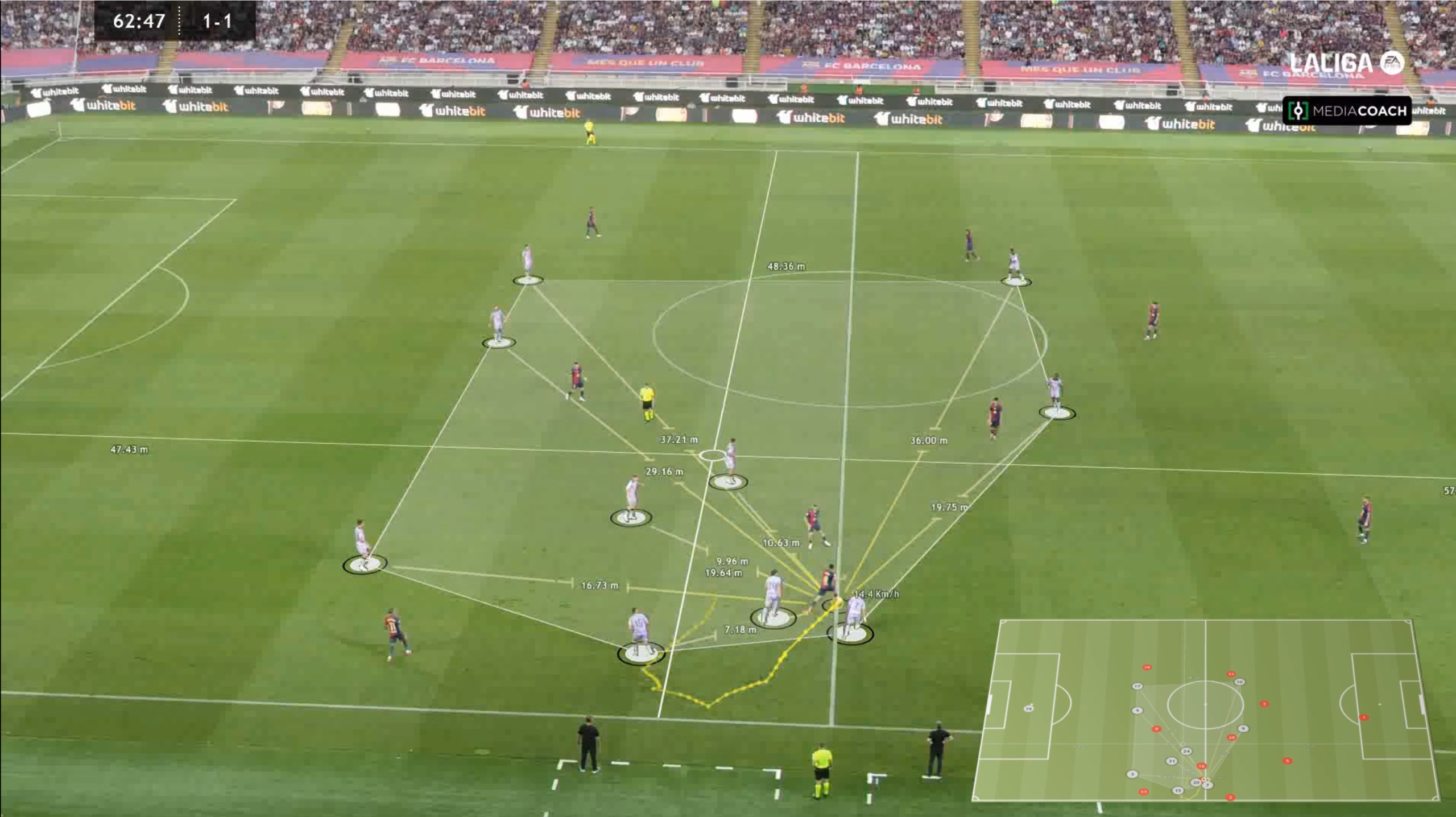
15 Oct Practical Applications of Player-to-Ball Distance Analysis in the Defensive Block
At LaLiga, we have developed an advanced model that analyzes the defensive block’s behavior by measuring the distances players maintain to the ball. This model utilizes key tactical concepts like the convex hull and the team centroid to divide the field into four sectors, analyzing how optimal distances vary depending on whether players are closer or farther from the ball. The aim is to complement the coach’s expert observation, objectifying their evaluation and providing data that may sometimes go unnoticed, especially in the analysis of the opponent.
How does the model work?
The model detects the quadrant of the field where the ball is located and calculates the optimal distances of the players according to the defensive block (high, medium, or low) and the area occupied by the team (the convex hull). Depending on the game phase (high, medium, or low pressure), the optimal distances vary, allowing for a detailed analysis of the defensive structure.
The analysis correlates these distances with moments when the defensive block is either successfully held or bypassed by the opponent, assessing whether the play ends in a clear scoring opportunity. This helps identify tactical disorganization patterns that may explain the failure to contain an attack.
Practical Applications of the Model
- Optimizing defensive positioning: Coaches can adjust player positioning based on optimal distances from the ball, ensuring the team maintains cohesion within any defensive block (high, medium, or low).
- Improving tactical organization: The model identifies when the defensive block is disorganized, allowing coaches to correct the team’s structure to avoid vulnerabilities.
- Managing physical effort: By calculating player-to-ball distances, coaches can better manage the players’ efforts, avoiding unnecessary fatigue and optimizing energy throughout the game.
- Identifying key players in tactical disorganization: The analysis evaluates which players are more prone to disrupting defensive balance, helping to implement individual and collective tactical corrections.
- Training planning based on real situations: Coaches can recreate specific pressure and defensive scenarios, adjusting player distances and positioning to improve performance in real match situations.
- Opponent tactical analysis: This model adds value by identifying defensive disorganization patterns in opposing teams, providing data that can be used to exploit their weaknesses.
Conclusions
This model complements the coach’s ability to analyze the team’s defensive performance, offering an approach based on objective data that strengthens tactical observations. By identifying and correcting disorganization patterns, the defensive organization is optimized, enhancing the team’s ability to manage pressure and prevent dangerous chances from the opposition.


